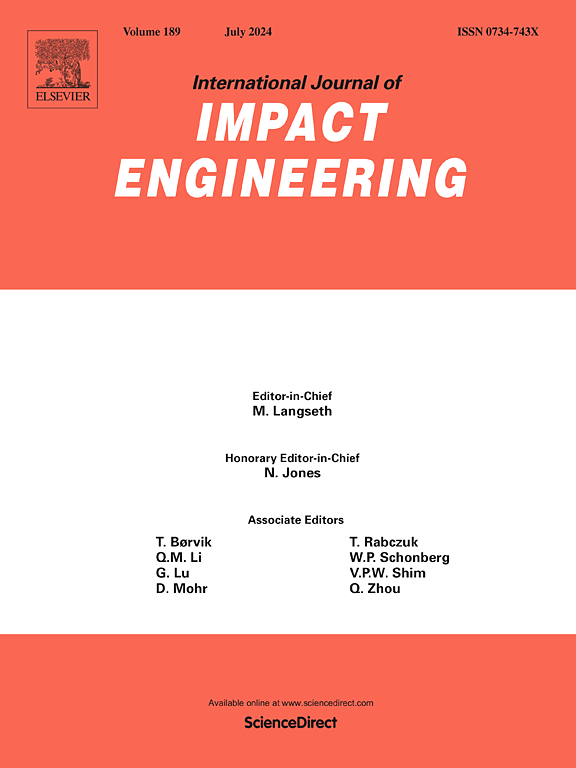The design, modelling and testing of an electric gun load for the study of dynamic material properties
IF 5.1
2区 工程技术
Q1 ENGINEERING, MECHANICAL
International Journal of Impact Engineering
Pub Date : 2024-12-16
DOI:10.1016/j.ijimpeng.2024.105179
引用次数: 0
Abstract
This work presents the design and testing of an electric gun load intended for characterising the properties of materials under extreme conditions. Projectile launch techniques, such as gas guns and electromagnetic (EM) flyer plates, are capable of creating planar, high-pressure shocks across substantial material volumes, resulting in precise equation of state measurements. However, achieving these conditions necessitates specific flyer characteristics: the flyer must maintain near-constant density and velocity across a minimum thickness, in the direction of travel, until reaching the target. This has been achieved in EM flyer plates through sophisticated current pulse shaping (Lemke et al., 2014). This work involved the adaptation of an existing electric gun design to meet these criteria while utilising a relatively simple, fixed rise-time, pulsed-power driver instead. The proposed load achieves this by accelerating a 0.5-mm-thick insulating flyer whilst minimising state change (thus maintaining near-constant density) and eliminating the forces driving the flyer prior to impact by launching it across a stand-off distance (ensuring constant velocity). A combination of our 0D model (Fitzgerald et al., 2023) and a 2D in-house hydrocode were used to determine the optimal thicknesses for its constituent parts: the driving metal foil and plastic flyer. Experimental testing was conducted using a 140 kV electric gun load to validate the model’s predictions and examine the correlation between the shock pulse shape at impact and the stand-off distance from the launch site. The results reveal the optimised load successfully generated a shock pulse in a PMMA target block with a magnitude of 20 GPa for a duration of 1.0 µs, over region with 10 mm width, and at a 10 cm stand-off from the launch site. This large stand-off distance ensured the flyer was ballistic (constant velocity) on impact and also shielded the diagnostic line of sight from plasma generated on launch, allowing for precise measurements to be made. These outcomes suggest the electric gun technique can now be used to explore dynamic properties of materials using relatively simple pulsed-power devices with a fixed current rise-time.
求助全文
约1分钟内获得全文
求助全文
来源期刊

International Journal of Impact Engineering
工程技术-工程:机械
CiteScore
8.70
自引率
13.70%
发文量
241
审稿时长
52 days
期刊介绍:
The International Journal of Impact Engineering, established in 1983 publishes original research findings related to the response of structures, components and materials subjected to impact, blast and high-rate loading. Areas relevant to the journal encompass the following general topics and those associated with them:
-Behaviour and failure of structures and materials under impact and blast loading
-Systems for protection and absorption of impact and blast loading
-Terminal ballistics
-Dynamic behaviour and failure of materials including plasticity and fracture
-Stress waves
-Structural crashworthiness
-High-rate mechanical and forming processes
-Impact, blast and high-rate loading/measurement techniques and their applications
 求助内容:
求助内容: 应助结果提醒方式:
应助结果提醒方式:


